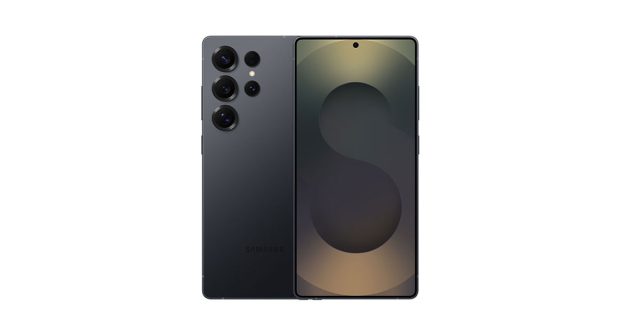We put the Samsung Galaxy S25 Ultra through our rigorous DXOMARK Camera test suite to measure its performance in photo, video, and zoom quality from an end-user perspective. This article breaks down how the device fared in a variety of tests and several common use cases and is intended to highlight the most important results of our testing with an extract of the captured data.
Overview
Key camera specifications:
- Primary: 200MP 1/1.3″ sensor, 24mm equivalent f/1.7-aperture lens, multi-directional PDAF, OIS
- Ultra-wide: 50MP sensor, 120˚ f/1.9-aperture lens, dual pixel PDAF, Super Steady video
- Tele 1: 10MP 1/3.52″ sensor, 67mm equivalent f/2.4-aperture lens, PDAF, OIS
- Tele 2: 50MP 1/2.52″ sensor, 111mm equivalent f/3.4-aperture lens, (periscope design), PDAF, OIS
Scoring
Sub-scores and attributes included in the calculations of the global score.
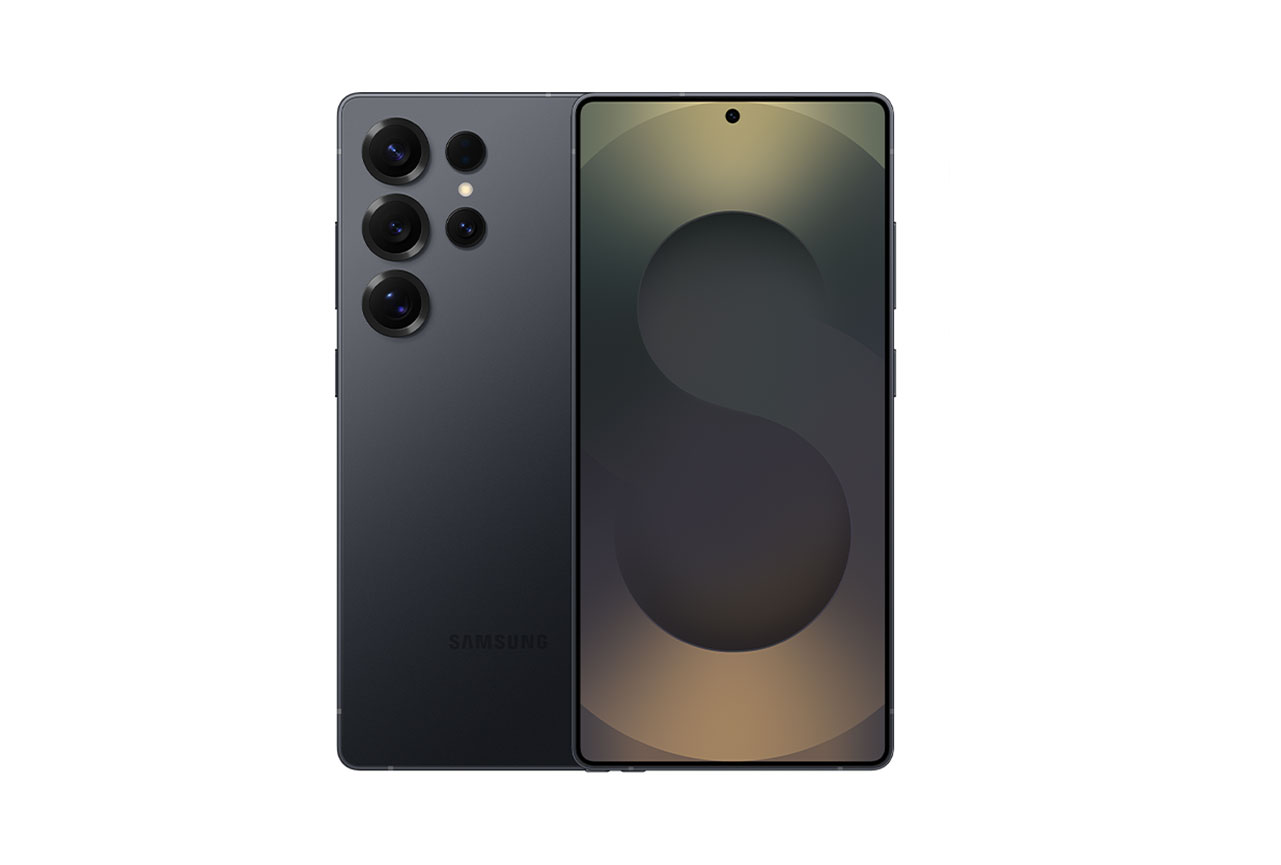
Samsung Galaxy S25 Ultra

146

camera
Use cases & Conditions
Use case scores indicate the product performance in specific situations. They are not included in the overall score calculations.
Outdoor
Photos & videos shot in bright light conditions (≥1000 lux)
Indoor
Photos & videos shot in good lighting conditions (≥100lux)
Lowlight
Photos & videos shot in low lighting conditions (<100 lux)
Friends & Family
Portrait and group photo & videos
 26th
26th
4. Apple iPhone 16 Pro Max
157
10. Apple iPhone 15 Pro Max
154
22. Honor Magic4 Ultimate
147
26. Apple iPhone 14 Pro Max
146
26. Motorola Edge 50 Ultra
146
26. Samsung Galaxy S25 Ultra
146
32. Samsung Galaxy S24 Ultra
144
34. Apple iPhone 13 Pro Max
141
34. Google Pixel 9 Pro Fold
141
38. Samsung Galaxy S23 Ultra
140
43. Tecno Camon 40 Pro 5G
138
45. Vivo X80 Pro (Snapdragon)
137
52. Samsung Galaxy S22 Ultra (Snapdragon)
135
52. Vivo X80 Pro (MediaTek)
135
59. Samsung Galaxy Z Fold6
133
59. Samsung Galaxy S24+ (Exynos)
133
59. Samsung Galaxy S24 FE
133
59. Samsung Galaxy S24 (Exynos)
133
69. Samsung Galaxy Z Flip6
132
70. Apple iPhone 12 Pro Max
131
70. Samsung Galaxy S22 Ultra (Exynos)
131
81. Samsung Galaxy Z Fold5
128
83. Asus Smartphone for Snapdragon Insiders
127
83. Samsung Galaxy Z Flip5
127
83. Samsung Galaxy S23 FE
127
88. Vivo X70 Pro (MediaTek)
126
92. Asus Zenfone 11 Ultra
125
92. Samsung Galaxy S22+ (Exynos)
125
97. Samsung Galaxy Z Fold4
124
100. Apple iPhone 11 Pro Max
122
105. Xiaomi Redmi Note 13 Pro Plus 5G
121
106. Samsung Galaxy Z Fold3 5G
120
106. Samsung Galaxy S22 (Exynos)
120
106. Xiaomi Redmi Note 13 Pro 5G
120
111. Xiaomi Redmi Note 14 Pro+ 5G
118
114. Apple iPhone 12 mini
117
114. Samsung Galaxy S21 Ultra 5G (Snapdragon)
117
114. Samsung Galaxy S21 FE 5G (Snapdragon)
117
114. Samsung Galaxy S21 5G (Snapdragon)
117
120. Vivo X60 Pro 5G (Snapdragon)
116
123. Motorola Edge 50 Neo
115
123. Samsung Galaxy S21+ 5G (Snapdragon)
115
123. Samsung Galaxy S21 Ultra 5G (Exynos)
115
133. Crosscall Stellar-X5
113
133. Xiaomi Redmi Note 12 Pro+ 5G
113
137. Samsung Galaxy Z Flip4
112
139. Samsung Galaxy Z Flip3 5G
111
139. Samsung Galaxy S21+ 5G (Exynos)
111
139. Samsung Galaxy S21 5G (Exynos)
111
144. Samsung Galaxy A55 5G
108
144. Vivo X60 Pro 5G (Exynos)
108
149. Samsung Galaxy A54 5G
107
150. Xiaomi Redmi Note 14 Pro 5G
106
153. Samsung Galaxy A35 5G
104
154. Motorola Edge 40 Neo
103
154. Xiaomi Redmi Note 14 5G
103
156. Xiaomi Redmi Note 12 Pro 5G
102
158. Motorola Edge 30 Pro
101
160. Apple iPhone SE (2022)
100
162. Motorola Moto g75 5G
96
168. Samsung Galaxy A34 5G
92
168. Samsung Galaxy A25 5G
92
172. Xiaomi Redmi Note 13 5G
91
174. Motorola Moto g85 5G
88
174. Samsung Galaxy A52s 5G
88
174. Samsung Galaxy A52 5G
88
178. Motorola moto g54 5G
85
178. Samsung Galaxy A33 5G
85
178. Samsung Galaxy A16 LTE
85
181. Honor Magic6 Lite (5300 mAh)
84
181. Xiaomi Redmi Note 14
84
184. Samsung Galaxy A15 5G
83
186. Samsung Galaxy A15 LTE
81
187. Samsung Galaxy A53 5G
79
189. Xiaomi Redmi Note 11 Pro 5G
78
191. Samsung Galaxy A16 5G
77
193. Motorola Moto G35 5G
75
193. Xiaomi Redmi Note 13
75
196. Honor Magic5 Lite 5G
74
198. Samsung Galaxy A23 5G
70
199. Xiaomi Redmi Note 12 5G
69
202. Motorola moto g34 5G
67
202. Samsung Galaxy A14 5G
67
204. Motorola Moto G62 5G
66
205. Xiaomi Redmi Note 11S 5G
65
207. Xiaomi Redmi Note 12
63
212. Honor Magic4 Lite 5G
61
214. Xiaomi Redmi Note 11
60
216. Crosscall Stellar-M6
59
223. Xiaomi Redmi 10 2022
51
225. Samsung Galaxy A22 5G
48
 23rd
23rd
4. Apple iPhone 16 Pro Max
157
10. Apple iPhone 15 Pro Max
154
20. Honor Magic4 Ultimate
147
23. Apple iPhone 14 Pro Max
146
23. Motorola Edge 50 Ultra
146
23. Samsung Galaxy S25 Ultra
146
28. Samsung Galaxy S24 Ultra
144
30. Apple iPhone 13 Pro Max
141
30. Google Pixel 9 Pro Fold
141
34. Samsung Galaxy S23 Ultra
140
38. Vivo X80 Pro (Snapdragon)
137
43. Samsung Galaxy S22 Ultra (Snapdragon)
135
43. Vivo X80 Pro (MediaTek)
135
48. Samsung Galaxy Z Fold6
133
48. Samsung Galaxy S24+ (Exynos)
133
53. Samsung Galaxy Z Flip6
132
54. Apple iPhone 12 Pro Max
131
54. Samsung Galaxy S22 Ultra (Exynos)
131
61. Samsung Galaxy Z Fold5
128
63. Asus Smartphone for Snapdragon Insiders
127
63. Samsung Galaxy Z Flip5
127
68. Asus Zenfone 11 Ultra
125
68. Samsung Galaxy S22+ (Exynos)
125
71. Samsung Galaxy Z Fold4
124
73. Apple iPhone 11 Pro Max
122
76. Samsung Galaxy Z Fold3 5G
120
81. Samsung Galaxy S21 Ultra 5G (Snapdragon)
117
83. Samsung Galaxy S21+ 5G (Snapdragon)
115
83. Samsung Galaxy S21 Ultra 5G (Exynos)
115
89. Samsung Galaxy Z Flip4
112
90. Samsung Galaxy Z Flip3 5G
111
90. Samsung Galaxy S21+ 5G (Exynos)
111
Pros
- Good detail in zoom shots, especially at long range
- Good exposure and wide dynamic range in bright light video
- Good photo and video detail in most conditions
- Natural skin tones in non-challenging scenes
- Natural video color rendering with neutral white balance in bright light and indoors
Cons
- Some autofocus instabilities in video mode
- Exposure adaptation issues in video
- Noticeable noise in low-light videos
- Noticeable noise, especially in high-contrast and low-light photos
- Occasional white balance casts, especially in low light
- Occasional activation failures in bokeh mode
The Samsung Galaxy S25 Ultra delivered a solid performance in the DXOMARK Camera tests but was unable to secure a position among the very best in our ranking. An upgraded chipset (Snapdragon 8 Elite vs Snapdragon 8 Gen 2) and a higher pixel count on the ultra-wide camera (50MP vs 12MP) aside, the camera hardware specifications are very similar to the predecessor Galaxy S24 Ultra. The device was evaluated on multiple software updates (including the latest one before this publication), and in our tests, imaging performance improvements over the predecessor were only modest, despite slight improvements in software processing and some additional AI features.
While the S25 Ultra maintained its predecessor’s solid overall image quality, some issues were noticeable. In bright light, our testers observed some slight highlight clipping. While the camera produced vivid colors with natural skin tones in most tested scenes, we noticed occasional white balance shifts that resulted in slight color casts especially in low lights. Image noise was one of the S25 Ultra’s main areas for improvement, with grain particularly noticeable in high-contrast and low-light scenes. Our testers also observed some noise reduction instabilities across consecutive shots. In terms of detail, the S25 Ultra’s sharpness was slightly better than last year’s model in lowlight conditions.
In our zoom tests, the Samsung stood out at long-range tele settings, but also provided good image quality at close and medium range. The new ultrawide camera with its higher resolution sensor matched the image quality of the predecessor.
Like for stills, the Samsung Galaxy S25 Ultra did not introduce any groundbreaking improvements in overall video performance. This said, video results remained strong. The camera was taking full advantage of its HDR capabilities to provide video footage with well-balanced highlights and shadows. In good light, video detail levels were high, with accurate exposure management and natural colors, making for an overall pleasant viewing experience. However, some struggles became apparent in dimmer conditions, with more intrusive noise, particularly in the shadows, and some quite pronounced color casts. Our testers also noticed objectionable autofocus and exposure adaptation instabilities. Video stabilization remained largely unchanged from the previous generation, providing a reliable experience. This said, it did not quite match the level of smoothness of the best-in-class iPhone 16 Pro Max.
Thanks to vibrant colors and generally correct exposure in correct lighting conditions, the Samsung Galaxy S25 Ultra is a solid choice for portrait photography. In our tests, we noticed a slight delay between pressing the shutter and capturing the image, but the S25 Ultra was quicker and more responsive than the predecessor S24 Ultra, making it a better option for fast-moving subjects. The camera’s shallow depth of field could cause some faces to be out of focus in group shots, but it also created a nicely blurred background. Close-up portrait shots also had nice skin tones and good exposure.

Samsung Galaxy S25 Ultra – High contrast on HDR display, nice skin tones
While in low light, most photos were exposed well, but in some scenes, subjects could be slightly underexposed. Our testers also observed noise and detail inconsistencies between consecutive shots when shooting in low-light scenes. White balance was generally accurate but could appear unnatural at times under challenging illuminants. Overall, the camera provided good rendering but lacked consistency across lighting conditions, particularly in terms of noise and exposure accuracy.
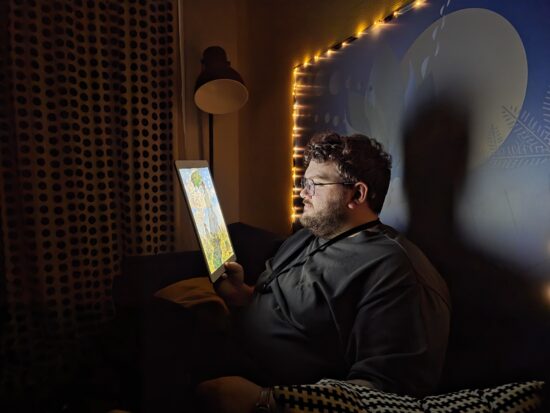
Samsung Galaxy S25 Ultra – Good exposure and wide dynamic range, slight warm color cast

Test summary
About DXOMARK Camera tests: DXOMARK’s Camera evaluations take place in laboratories and in real-world situations using a wide variety of subjects. The scores rely on objective tests for which the results are calculated directly by measurement software on our laboratory setups, and on perceptual tests in which a sophisticated set of metrics allow a panel of image experts to compare aspects of image quality that require human judgment. Testing a smartphone involves a team of engineers and technicians for about a week. Photo, Zoom, and Video quality are scored separately and then combined into an Overall score for comparison among the cameras in different devices. For more information about the DXOMARK Camera protocol, click here. More details on smartphone camera scores are available here. The following section gathers key elements of DXOMARK’s exhaustive tests and analyses. Full performance evaluations are available upon request. Please contact us on how to receive a full report.
Samsung Galaxy S25 Ultra Camera Scores
This graph compares DXOMARK photo, zoom and video scores between the tested device and references. Average and maximum scores of the price segment are also indicated. Average and maximum scores for each price segment are computed based on the DXOMARK database of devices tested.
Photo
144
Huawei Pura 70 Ultra
Huawei Pura 70 Ultra
About DXOMARK Camera Photo tests
For scoring and analysis, DXOMARK engineers capture and evaluate more than 2,600 test images both in controlled lab environments and in outdoor, indoor and low-light natural scenes, using the camera’s default settings. The photo protocol is designed to take into account the main use cases and is based on typical shooting scenarios, such as portraits, family, and landscape photography. The evaluation is performed by visually inspecting images against a reference of natural scenes, and by running objective measurements on images of charts captured in the lab under different lighting conditions from 1 to 1,000+ lux and color temperatures from 2,300K to 6,500K.
While the Samsung Galaxy S25 Ultra’s camera hardware remains largely unchanged from the S24 Ultra and the new model uses a very similar HDR rendering process as its predecessor, our testers did occasionally observe a slight performance regression on the new model, for example in terms of exposure and noise.
When viewed on a compatible display, the S25 Ultra’s HDR images were vibrant and pleasantly bright, with generally accurate target exposure in non-challenging scenes. However, highlight clipping could be more noticeable than on the S24 Ultra. White balance was neutral, but color casts could make an appearance, mostly in low-light or night scenes. Apart from some exceptions in low light and night conditions, color rendering was accurate across most light conditions, and in bright light, the S25 Ultra captured good detail. However, image noise was more pronounced than on the predecessor, particularly in high-contrast scenes with strong backlighting.
Samsung Galaxy S25 Ultra Photo scores

Exposure
117
Huawei Pura 70 Ultra
Huawei Pura 70 Ultra
Exposure is one of the key attributes for technically good pictures. The main attribute evaluated is the brightness of the main subject through various use cases such as landscape, portrait, or still life. Other factors evaluated are the contrast and the dynamic range, eg. the ability to render visible details in both bright and dark areas of the image. Repeatability is also important because it demonstrates the camera’s ability to provide the same rendering when shooting several images of the same scene.
The Samsung Galaxy S25 Ultra delivered a decent performance in the exposure category, benefiting from Samsung’s HDR format and image processing. Overall performance was close to the predecessor, but our testers noted a slight regression in certain scenes. For example, in challenging light conditions, highlight clipping was more noticeable. While colors appeared more vibrant, they occasionally veered towards being overly saturated, resulting in a slightly unnatural appearance in some instances.

Samsung Galaxy S25 Ultra – Highlight clipping, white balance cast, slightly unnatural background colors, strong noise on subjects

Samsung Galaxy S24 Ultra – White balance cast, noise on subjects

Apple iPhone 16 Pro Max – Neutral white balance, noise on models

Color
125
Apple iPhone 16 Pro
Apple iPhone 16 Pro
Color is one of the key attributes for technically good pictures. The image quality attributes analyzed are skin-tone rendering, white balance, color shading, and repeatability. For color and skin tone rendering, we penalize unnatural colors but we respect a manufacturer’s choice of color signature.
In terms of color rendering and white balance, our testers observed noticeable differences to the S24 Ultra, but which version you prefer is largely down to personal taste. Colors were generally nice when capturing bright outdoor scenes, but color casts could result in a slightly unnatural look, especially in low light.

Samsung Galaxy S25 Ultra – Warm cast, natural skin tones

Samsung Galaxy S24 Ultra – Cool cast
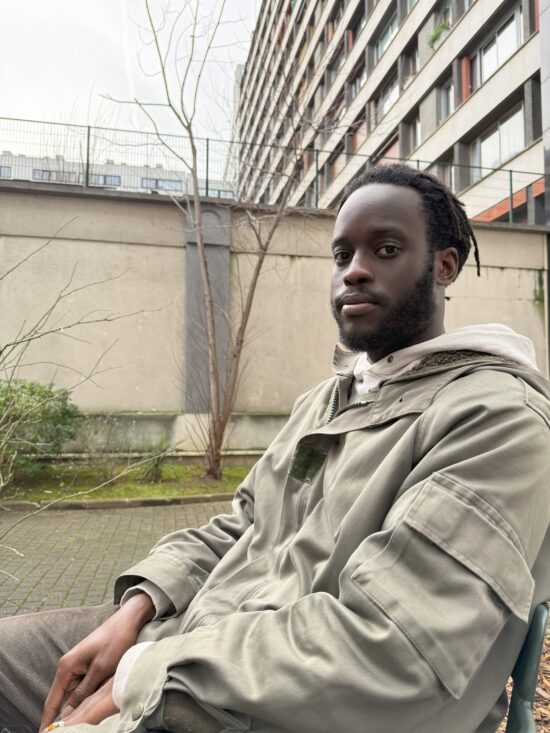
Apple iPhone 16 Pro Max – Accurate white balance, natural skin tones

Samsung Galaxy S25 Ultra – Green cast
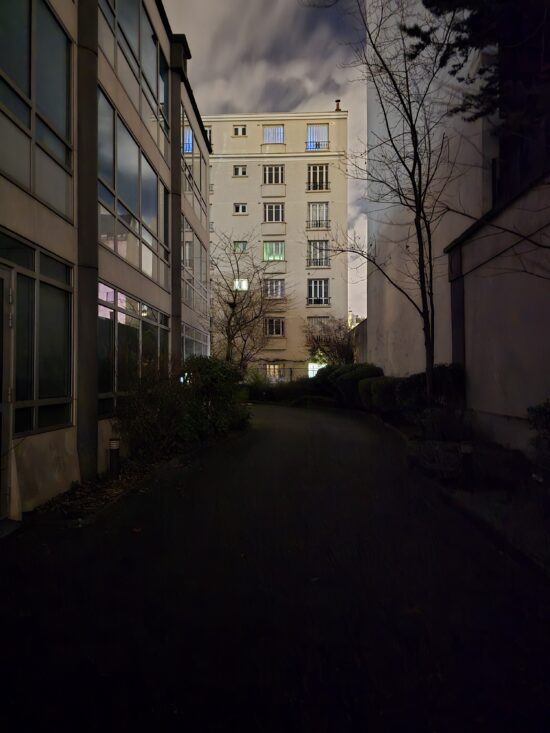
Samsung Galaxy S24 Ultra – Orange/pink cast

Apple iPhone 16 Pro Max – Orange cast

Autofocus
103
Huawei Pura 70 Ultra
Huawei Pura 70 Ultra
Autofocus tests concentrate on focus accuracy, focus repeatability, shooting time delay, and depth of field. Shooting delay is the difference between the time the user presses the capture button and the time the image is actually taken. It includes focusing speed and the capability of the device to capture images at the right time, what is called ‘zero shutter lag’ capability. Even if a shallow depth of field can be pleasant for a single subject portrait or close-up shot, it can also be a problem in some specific conditions such as group portraits; Both situations are tested. Focus accuracy is also evaluated in all the real-life images taken, from infinity to close-up objects and in low light to outdoor conditions.
During autofocus testing, our experts noticed that the delay between pressing the shutter and capturing the image had been reduced when compared to the S24 Ultra, across a variety of shooting conditions but particularly in high-contrast scenes. The autofocus was precise and stable. However, the depth of field could occasionally be shallower than on the S24 Ultra, resulting in a blurrier middle plane (background model in the shots below) in some shots.

Samsung Galaxy S25 Ultra – Front face in focus, background face out of focus

Samsung Galaxy S24 Ultra – Front face in focus, background face out of focus

Apple iPhone 16 Pro Max – Front face in focus, background face out of focus
Edge acutance irregularity and average shooting delay along all tested conditions
Autofocus irregularity and speed: 20Lux Δ7EV Tungsten Handheld

Texture
121
Xiaomi 15 Ultra
Xiaomi 15 Ultra
Texture tests analyze the level of details and the texture of subjects in the images taken in the lab as well as in real-life scenarios. For natural shots, particular attention is paid to the level of details in the bright and dark areas of the image. Objective measurements are performed on chart images taken in various lighting conditions from 1 to 1000 lux and different kinds of dynamic range conditions. The charts used are the proprietary DXOMARK chart (DMC) and the Dead Leaves chart.
DXOMARK CHART (DMC) detail preservation score vs lux levels for tripod and handheld conditions
This graph shows the evolution of the DMC detail preservation score with the level of lux, for two holding conditions. DMC detail preservation score is derived from an AI-based metric trained to evaluate texture and details rendering on a selection of crops of our DXOMARK chart.
Overall, the level of detail captured by the S25 Ultra camera was quite comparable to the S24 Ultra. However, in some of our test scenes, the S25 Ultra preserved better detail, particularly in low light.

Samsung Galaxy S25 Ultra – Low light detail

Samsung Galaxy S25 Ultra – Very good detail

Samsung Galaxy S24 Ultra – Low light detail

Samsung Galaxy S24 Ultra – Good detail

Apple iPhone 16 Pro Max – Low light detail

Apple iPhone 16 Pro Max – Slight loss of detail

Noise
84
Huawei Pura 70 Ultra
Huawei Pura 70 Ultra
Noise tests analyze various attributes of noise such as intensity, chromaticity, grain, structure on real-life images as well as images of charts taken in the lab. For natural images, particular attention is paid to the noise on faces, landscapes, but also on dark areas and high dynamic range conditions. Noise on moving objects is also evaluated on natural images. Objective measurements are performed on images of charts taken in various conditions from 1 to 1000 lux and different kinds of dynamic range conditions. The chart used is the Dead Leaves chart and the standardized measurement such as Visual Noise derived from ISO 15739.
Visual noise evolution with illuminance levels in handheld condition
This graph shows the evolution of visual noise metric with the level of lux in handheld condition. The visual noise metric is the mean of visual noise measurement on all patches of the Dead Leaves chart in the AFHDR setup. DXOMARK visual noise measurement is derived from ISO15739 standard.
In bright light, image noise was well under control. However, in scenes with strong backlighting and in low light, noise was more intrusive than on the S24 Ultra. In addition, our experts noticed unpleasant chroma noise and some noise reduction instabilities across consecutive shots of the same scene when shooting high-contrasted scenes.

Samsung Galaxy S25 Ultra – Noise in backlit scenes

Samsung Galaxy S25 Ultra – Visible noise on the subject

Samsung Galaxy S24 Ultra – Noise in backlit scenes

Samsung Galaxy S24 Ultra – Noticeable noise on the subject

Apple Iphone 16 Pro Max – Noise in backlit scene

Apple iPhone 16 Pro Max – Noticeable noise on the subject

Samsung Galaxy S25 Ultra – Low light noise

Samsung Galaxy S25 Ultra – Chromatic noise noticeable when zooming in

Samsung Galaxy S24 Ultra – Low light noise

Samsung Galaxy S24 Ultra – Noise slightly noticeable when zooming in

Apple Iphone 16 Pro Max – Low light noise

Apple iPhone 16 Pro Max – Noise slightly noticeable when zooming in

Samsung Galaxy S25 Ultra – Image of a series of consecutive shots

Samsung Galaxy S25 Ultra – Different shot of the same series – instability in processing is impacting the rendering of details, contrast, and color.

Artifacts
77
Xiaomi Redmi 12 5G
Xiaomi Redmi 12 5G
The artifacts evaluation looks at lens shading, chromatic aberrations, geometrical distortion, edges ringing, halos, ghosting, quantization, unexpected color hue shifts, among others type of possible unnatural effects on photos. The more severe and the more frequent the artifact, the higher the point deduction on the score. The main artifacts observed and corresponding point loss are listed below.
Main photo artifacts penalties
Overall, image artifacts were managed better on the Samsung Galaxy S25 Ultra than on its predecessor, but they can be a bit less controlled than direct competitors. Color quantization was more noticeable on the new model.
Bokeh
70
Huawei Pura 70 Ultra
Huawei Pura 70 Ultra
Bokeh is tested in one dedicated mode, usually portrait or aperture mode, and analyzed by visually inspecting all the images captured in the lab and in natural conditions. The goal is to reproduce portrait photography comparable to one taken with a DLSR and a wide aperture. The main image quality attributes paid attention to are depth estimation, artifacts, blur gradient, and the shape of the bokeh blur spotlights. Portrait image quality attributes (exposure, color, texture) are also taken into account.
Like the S24 Ultra, the S25 Ultra uses its short telephoto camera in bokeh mode. The longer focal length, with its compressed perspective, proves to be a better option for capturing portrait images when compared to the wide-angle lenses used by many competitors. In our tests, bokeh performance was very similar to that of its predecessor, with good subject isolation. This said, we found the feature to be somewhat unstable. The bokeh effect did not work every time.

Samsung Galaxy S25 Ultra – Good subject isolation, foreground blur

Samsung Galaxy S24 Ultra – Good subject isolation, foreground blur

Apple iPhone 16 Pro Max – Very good subject isolation, foreground blur

Samsung Galaxy S25 Ultra – Consecutive shots – Bokeh effect triggered

Samsung Galaxy S25 Ultra – Consecutive shots – No bokeh effect, instability in color processing
Preview
81
Apple iPhone 16 Pro
Apple iPhone 16 Pro
Preview tests analyze the image quality of the camera app’s preview of the image, with particular attention paid to the difference between the capture and the preview, especially regarding dynamic range and the application of the bokeh effect. Also evaluated is the smoothness of the exposure, color and focus adaptation when zooming from the minimal to the maximal zoom factor available. The preview frame rate is measured using the LED Universal Timer.
On the Galaxy S25 Ultra, the preview image on the display matched the final captured photo closely in most cases. However, in more challenging scenes, the dynamic range in the preview image appeared somewhat narrower compared to the captured photo. In addition, there were occasional white balance discrepancies between preview and capture. On the plus side, the preview image remained smooth and stable when zooming in or out.
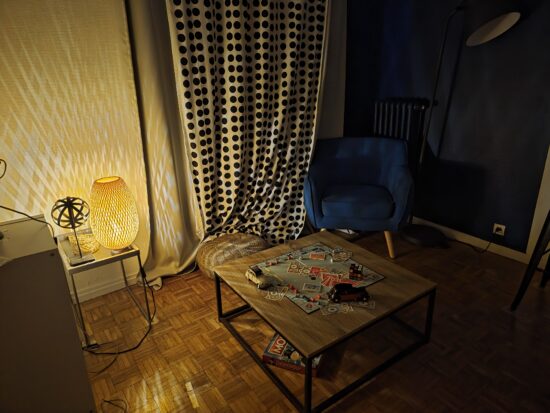
Samsung Galaxy S25 Ultra – Capture
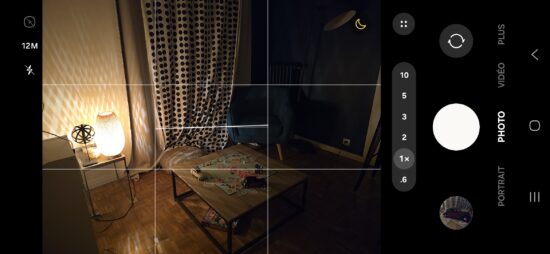
Samsung Galaxy S25 Ultra – Preview
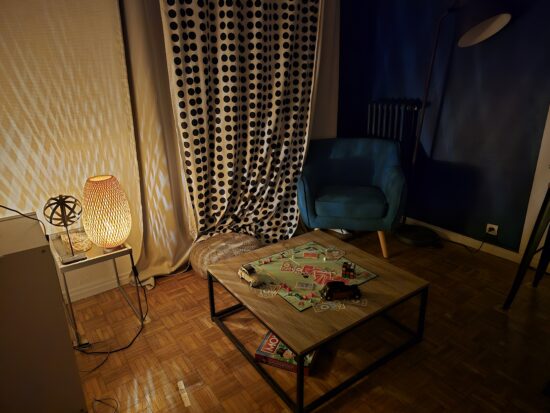
Samsung Galaxy S24 Ultra – Capture
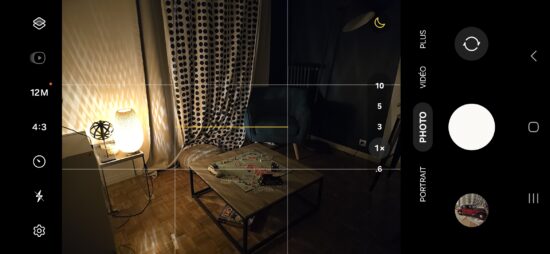
Samsung Galaxy S24 Ultra – Preview
Zoom
149
Xiaomi 15 Ultra
Xiaomi 15 Ultra
About DXOMARK Camera Zoom tests
DXOMARK engineers capture and evaluate over 400 test images in controlled lab environments and in outdoor, indoor, and low-light natural scenes, using the camera’s default settings and pinch zoom at various zoom factors from ultra wide to very long-range zoom. The evaluation is performed by visually inspecting the images against a reference of natural scenes, and by running objective measurements of chart mages captured in the lab under different conditions from 20 to 1000 lux and color temperatures from 2300K to 6500K.
The Samsung Galaxy S25 Ultra features a dual optical zoom setup, with 3x and 5x magnifications. In our zoom tests, the Samsung provided reliable image quality at close and medium range settings. Long range was exceptional, capturing high levels of detail, especially when shooting in bright light. In low light conditions, noise could be quite noticeable, though. The new ultrawide camera with its higher resolution sensor enables to improve a bit the performances compared to the S24 Ultra mainly thanks to better controlled noise in the images.
Samsung Galaxy S25 Ultra Zoom Scores
This graph illustrates the relative scores for the different zoom ranges evaluated. The abscissa is expressed in 35mm equivalent focal length. Zooming-in scores are displayed on the right and Zooming-out scores on the left.

Wide
107
Huawei Pura 70 Ultra
Huawei Pura 70 Ultra
These tests analyze the performance of the ultra-wide camera at several focal lengths from 12 mm to 20 mm. All image quality attributes are evaluated, with particular attention paid to such artifacts as chromatic aberrations, lens softness, and distortion. Pictures below are an extract of tested scenes.
The Samsung Galaxy S25 Ultra features a new 50MP ultra-wide camera that maintains the same field of view as on previous models. In our tests, the image output was very similar to the S24 Ultra in terms of exposure and color, but we noticed that noise on the other hand was managed better and less intrusive, especially when shooting indoors or in low light. The device does not always get the best of its new 50MP sensor, and some images in bright light conditions actually showed a level of detail very close to what was seen on S24 Ultra.

Samsung Galaxy S25 Ultra – Accurate target exposure, noise well controlled on face and slightly visible in the field

Samsung Galaxy S24 Ultra- Accurate target exposure, visible noise on face and strong noise in the field

Apple iPhone 16 Pro Max – Accurate target exposure, visible fine luminance noise overall

Tele
109
Xiaomi 15 Ultra
Xiaomi 15 Ultra
All image quality attributes are evaluated at focal lengths from approximately 40 mm to 300 mm, with particular attention paid to texture and detail. The score is derived from a number of objective measurements in the lab and perceptual analysis of real-life images.
DXOMARK CHART (DMC) detail preservation score per focal length
DXOMARK CHART (DMC) detail preservation score per focal length
This graph shows the evolution of the DMC detail preservation score with respect to the full-frame equivalent focal length for different light conditions. The x-axis represents the equivalent focal length measured for each corresponding shooting distance and the y-axis represents the maximum details preservation metric score: higher value means better quality. Large dots correspond to zoom ratio available in the user interface of the camera application.
DXOMARK CHART (DMC) detail preservation score per focal length
This graph shows the evolution of the DMC detail preservation score with respect to the full-frame equivalent focal length for different light conditions. The x-axis represents the equivalent focal length measured for each corresponding shooting distance and the y-axis represents the maximum details preservation metric score: higher value means better quality. Large dots correspond to zoom ratio available in the user interface of the camera application.
DXOMARK CHART (DMC) detail preservation score per focal length
This graph shows the evolution of the DMC detail preservation score with respect to the full-frame equivalent focal length for different light conditions. The x-axis represents the equivalent focal length measured for each corresponding shooting distance and the y-axis represents the maximum details preservation metric score: higher value means better quality. Large dots correspond to zoom ratio available in the user interface of the camera application.
When using the tele zoom, performance was generally good at close and medium-range settings, but in some scenes, our testers noticed a slight lack of detail. The device really started to shine after switching to the 5x zoom module. This is when long-range performance significantly improved, delivering very good texture and clarity in distant subjects when shooting in bright conditions.

Samsung Galaxy S25 Ultra – Long range

Samsung Galaxy S25 Ultra – Very good detail

Samsung Galaxy S24 Ultra – Long range

Samsung Galaxy S24 Ultra – Good detail

Apple iPhone 16 Pro Max – Long range

Apple iPhone 16 Pro Max – Good detail
Video
143
Apple iPhone 16 Pro
Apple iPhone 16 Pro
About DXOMARK Camera Video tests
DXOMARK engineers capture and evaluate more than 2.5 hours of video in controlled lab environments and in natural low-light, indoor and outdoor scenes, using the camera’s default settings. The evaluation consists of visually inspecting natural videos taken in various conditions and running objective measurements on videos of charts recorded in the lab under different conditions from 1 to 1000+ lux and color temperatures from 2,300K to 6,500K.
The Samsung S25 Ultra offers a range of video resolutions and frame rates, including 8K at 24/30fps, 4K at 30/60/120fps, and 1080p at 30/60/240fps. Additionally, it supports 10-bit HDR, in HDR10 HLG format, unlike its predecessor, which offered HDR10+ PQ format. Our tests were performed at 4K resolution, 60fps and with HDR10 activated. Overall quality was good, offering a wide dynamic range and neutral, accurate colors when recording in bright light. However, some noise became noticeable in low light, as well as some occasional undesirable autofocus and exposure instabilities.
Samsung Galaxy S25 Ultra Video scores

Exposure
97
Oppo Find X8 Pro
Oppo Find X8 Pro
Exposure tests evaluate the brightness of the main subject and the dynamic range, eg. the ability to render visible details in both bright and dark areas of the image. Stability and temporal adaption of the exposure are also analyzed.
In our video tests, the Samsung Galaxy S25 Ultra delivered accurate target exposure on faces across a variety of light conditions, ensuring well-balanced brightness levels in most scenes. Dynamic range was wide, effectively preserving detail in both highlight and shadow portions of the frame. However, in particularly challenging high-contrast scenes, slight highlight clipping could be noticeable. Additionally, exposure adaptation when transitioning between different lighting conditions could occasionally be abrupt.
Samsung Galaxy S25 Ultra – Accurate target exposure, wide dynamic range
Samsung Galaxy S24 Ultra – Accurate target exposure, wide dynamic range
Apple iPhone 16 Pro Max – Accurate target exposure on face, wide dynamic range

Color
111
Oppo Find X8 Pro
Oppo Find X8 Pro
Image-quality color analysis looks at color rendering, skin-tone rendering, white balance, color shading, stability of the white balance and its adaption when light is changing.
The Samsung Galaxy S25 Ultra provided neutral white balance and accurate color rendering in bright light, ensuring natural and well-balanced tones. White balance remained stable across various scenes, contributing to color consistency and pleasant skin tone rendering. However, in low light, a slight warm color cast could be noticeable, along with a mild desaturation. This could impact overall color vibrancy in darker scenes.
Samsung Galaxy S25 Ultra – Pleasant color rendering, neutral white balance. A slight target exposure instability is noticeable.
Samsung Galaxy S24 Ultra – Pleasant color rendering, neutral white balance.
Apple iPhone 16 Pro Max – Pleasant color rendering, warmer white balance.

Autofocus
101
Huawei Pura 70 Ultra
Huawei Pura 70 Ultra
The Samsung Galaxy S25 Ultra features a responsive and precise autofocus system, ensuring accurate focus on faces in bright light conditions. In our tests, the autofocus was generally fast, providing sharp and well-defined subjects. However, in low light, our testers noticed occasional autofocus failures, with the focus sometimes locking onto the wrong target. We also observed some focus stepping, resulting in less smooth transitions than on some competitors.
Samsung Galaxy S25 Ultra – Smooth focus, refocusing on subject to the left
Samsung Galaxy S24 Ultra – Smooth and accurate focus
Apple iPhone 16 Pro Max – Smooth and accurate focus

Texture
114
Oppo Find X6 Pro
Oppo Find X6 Pro
Texture tests analyze the level of details and texture of the real-life videos as well as the videos of charts recorded in the lab. Natural videos recordings are visually evaluated, with particular attention paid to the level of details in the bright and areas as well as in the dark. Objective measurements are performed of images of charts taken in various conditions from 1 to 1000 lux. The charts used are the DXOMARK chart (DMC) and Dead Leaves chart.
DXOMARK CHART (DMC) detail preservation video score vs lux levels
This graph shows the evolution of the DMC detail preservation video score with the level of lux in video. DMC detail preservation score is derived from an AI-based metric trained to evaluate texture and details rendering on a selection of crops of our DXOMARK chart.
The Samsung Galaxy S25 Ultra captured very good detail when recording in bright light, preserving fine textures and intricate details with high accuracy. Sharpness was well-balanced, providing a natural look without excessive processing. However, in low light, some artifacts with local floating texture could become visible, slightly affecting the overall image quality in darker scenes.
Samsung Galaxy S25 Ultra – High levels of detail, natural sharpening
Apple iPhone 16 Pro Max – Very high levels of detail, natural sharpening

Noise
114
Apple iPhone 16 Pro
Apple iPhone 16 Pro
Noise tests analyze various attributes of noise such as intensity, chromaticity, grain, structure, temporal aspects on real-life video recording as well as videos of charts taken in the lab. Natural videos are visually evaluated, with particular attention paid to the noise in the dark areas and high dynamic range conditions. Objective measurements are performed on the videos of charts recorded in various conditions from 1 to 1000 lux. The chart used is the DXOMARK visual noise chart.
Spatial visual noise evolution with the illuminance level
Temporal visual noise evolution with the illuminance level
This graph shows the evolution of temporal visual noise with the level of lux. Temporal visual noise is measured on the visual noise chart in the video noise setup.
Video noise was well under control and pretty much not noticeable in bright light. However, noise became more intrusive when recording low-light scenes, appearing stronger than on the S24 Ultra. This could impact image quality in darker scenes, particularly in areas of plain color or in the shadow portions of the frame.
Samsung Galaxy S25 Ultra – Strong shadow noise, blue dots
Samsung Galaxy S24 Ultra – Shadow noise
Apple iPhone 16 Pro Max – Shadow noise

Stabilization
116
Apple iPhone 16 Pro
Apple iPhone 16 Pro
Stabilization evaluation tests the ability of the device to stabilize footage thanks to software or hardware technologies such as OIS, EIS, or any others means. The evaluation looks at residual motion, smoothness, jello artifacts and residual motion blur on walk and run use cases in various lighting conditions. The video below is an extract from one of the tested scenes.
The Samsung Galaxy S25 Ultra offered very good video stabilization when holding the camera still and when in motion during recording. Camera shake was effectively counteracted, resulting in smooth footage. However, slight residual camera motion could still be observed and overall stabilization performance was similar to the S24 Ultra. While the Samsung’s stabilization was reliable, it was not as impressive as on the latest iPhone models, especially with more dynamic camera motion.
Samsung Galaxy S25 Ultra – Effective stabilization, occasional slightly abrupt corrections, some floating texture artifacts.
Samsung Galaxy S24 Ultra – Effective stabilization, occasional slightly abrupt corrections, some jellow artifacts.
Apple iPhone 16 Pro Max – Effective stabilization, very smooth

Artifacts
84
Xiaomi 12S Ultra
Xiaomi 12S Ultra
Artifacts are evaluated with MTF and ringing measurements on the SFR chart in the lab as well as frame-rate measurements using the LED Universal Timer. Natural videos are visually evaluated by paying particular attention to artifacts such as aliasing, quantization, blocking, and hue shift, among others. The more severe and the more frequent the artifact, the higher the point deduction from the score. The main artifacts and corresponding point loss are listed below.
Main video artifacts penalties
Our testers found occasional unwanted video artifacts in the Samsung Galaxy S25 Ultra’s sample footage, including ringing around high-contrast edges, which can impact sharpness in certain scenes, aliasing, and moiré. Flare could also be noticeable, but was less pronounced compared to the iPhone. A hue shift effect could be visible close to clipped areas, and color quantization could affect the smoothness of color gradients.


